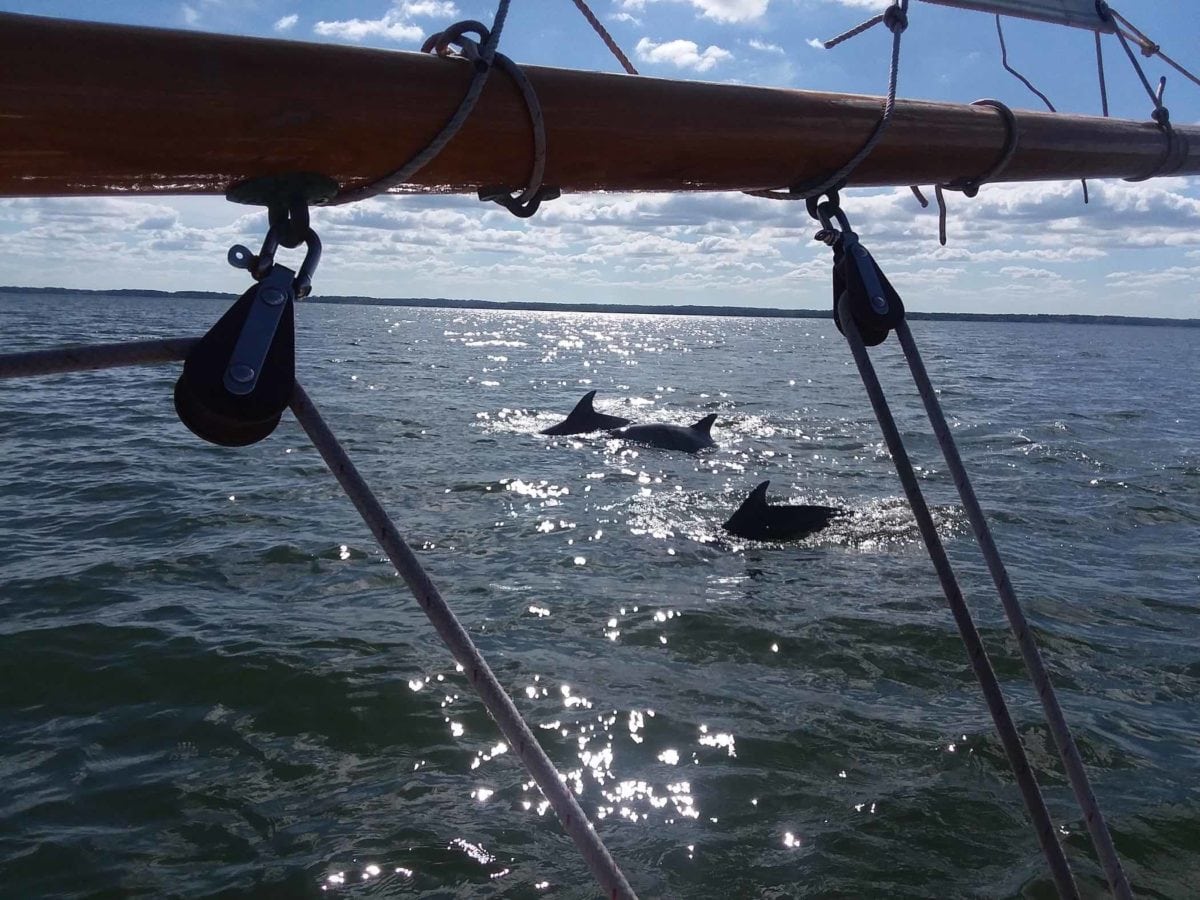The DolphinWatch app was launched by University of Maryland Center for Environmental Science in 2017 to provide a way to report sightings — and gather data — of dolphins in the Chesapeake Bay. It quickly became so popular that the existing staff couldn’t validate the sightings being reported.
That’s where Jamie Testa came in. With a background in stranded marine mammal response, gathering information and quickly responding was her expertise, which made her perfect for project coordinator of Dolphin Watch. The first few months required a lot of data validation with initial users, but has become less labor intensive as the platform has built in more checkpoints for data integrity.
“There’s no way we could have so many eyes out on the water,” Testa said. “It has been wildly successful to have this network engagement for our research.”
Fun Fact: Dolphins have their own names! Each dolphin has a unique sequence of clicks and whistles that acts as its “name,” which we call its signature whistle. They use these to identify themselves to other dolphins. #funfactfriday Photo by Steven Coffman, May 3 2019, Middle Bay pic.twitter.com/58l8eo4DSx
— DolphinWatch UMCES (@DolphinWatch_CB) June 28, 2019
To use the app, citizen scientists can log on to submit a picture alongside details of the dolphin sighting, including the number of dolphins, the time of day and their location.
The number of people using DolphinWatch has increased to 4,675 people, according to the team, and there have been a reported 2,222 dolphin sightings in the Chesapeake Bay so far.
Marine researchers are also able to connect sightings with the clicks from dolphins that they record with their seapods (click detectors) and hydrophones (underwater microphones) to engage the public in the underwater experience of the dolphins. Researchers are currently raising $500 for an additional hydrophone to expand the areas where they can gather underwater dolphin data.
As more data is being collected over time, research is also being done to check the water quality at the time of the sighting and how that correlates with other data. All of these factors can be integrated to help determine the changing health of the bay over time, and see how efforts to make the Chesapeake a healthier habitat for marine life are coming to fruition.
To be a part of these research efforts, log onto DolphinWatch, or follow on Facebook for pictures of the dolphin sightings.
We need more volunteers to record dolphin sightings in these areas: James River, Eastern Bay, Choptank River, Tangier Sound, Little Choptank River, Honga River, Fishing Bay, Nanticoke River, Wicomico River, Monie Bay, Manokin River, Pocomoke Sound and Virginia Eastern Shore!
— DolphinWatch UMCES (@DolphinWatch_CB) July 3, 2019
Join the conversation!
Find news, events, jobs and people who share your interests on Technical.ly's open community Slack

Baltimore daily roundup: The city's new esports lab; a conference in Wilmington; GBC reports $4B of economic activity

Baltimore daily roundup: Find your next coworking space; sea turtle legislation; Dali raided and sued

Baltimore daily roundup: Johns Hopkins dedicates The Pava Center; Q1's VC outlook; Cal Ripken inaugurates youth STEM center

